How to deal with rot on pepper bushes: advice from experienced gardeners
Summer residents grow vegetables not only to save money on food, but also to obtain environmentally friendly, healthy fruits. Disappointment comes from situations when vegetables become inedible and die on the vine.
In this article we will analyze one of the serious problems of growing vegetables - rot, and find out what to do if the fruits of sweet peppers rot.
Reasons why peppers may rot
Fruit rotting occurs when the main work on growing the plant is completed and the long-awaited harvest is already visible. Vegetable growers often wonder what are the reasons for the rotting of bell peppers in a greenhouse?

The main reasons why peppers rot on a bush in a greenhouse made of polycarbonate and in open ground, are as follows:
- excessive dampness, which is inherent in greenhouses made of polycarbonate and film - fruit rot occurs due to lack of ventilation or in rainy summers;
- high temperature - when the temperature rises to +30°C, and the greenhouse is also humid, rotting of the pepper is guaranteed;
- fungal diseases - most often peppers rot due to fungi that cause bacterial diseases;
- exposure to direct sunlight, causing burns on fruits;
- improper watering - excessive or insufficient;
- unsuitable soil composition - peppers do not like acidic soil: this is a fertile environment for the development of rot.
Rotting of sweet peppers can be avoided if you follow the rules for caring for the crop.. Often the problem arises due to excessive care, when novice gardeners want to create the most favorable conditions for growing, but have little understanding of the issue.
Advice. To avoid rot in the greenhouse, purchase or make your own structure with windows and two doors. In such a greenhouse you can organize ventilation and access to fresh air.
What is pepper rot like?
It is not difficult to recognize what specific rot has affected your plantings.. Damage differs in appearance and first signs.
With apical rot Brown spots appear on the pepper fruits, most often in the lower part, and the tip of the pepper deteriorates. In the future, it looks like dry rot on young bushes: first, flat affected areas appear, and then concave inward. An indirect sign of blossom end rot is that peppers stop growing and ripen immediately.
Attention! Eating vegetables affected by blossom end rot is dangerous to health, even after heat treatment.
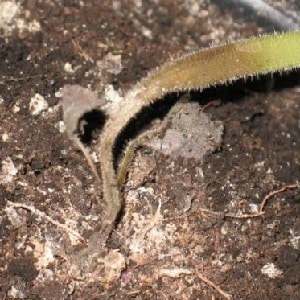 White rot, or sclerotinia, begins to develop underground in the form of a white coating on the stem, then affects the leaves, which become watery and covered with white mold resembling cotton wool.
White rot, or sclerotinia, begins to develop underground in the form of a white coating on the stem, then affects the leaves, which become watery and covered with white mold resembling cotton wool.
Blackleg (pictured) is named so because of its main characteristic - blackening of the stem at the base. Most often it affects seedlings, but can occur when young fruits have already appeared. Unlike other diseases, with blackleg the pepper rots on the root.
Spotted wilt, or bronzing, most often affects the leaves. They change color to yellow, bronze, purple. At the last stage, yellow and brown round spots appear on the peppers, which can easily be confused with rot.
Gray rot appears at the stalk. The top of the fruits and the leaves next to them are covered with olive-colored spots, and then with a gray putrid coating.
It can be useful:
What to feed in open ground for growth and thickness
Why peppers don’t grow: reasons and methods for solving them
Control methods depending on the disease
To effectively combat rotting, it is necessary to accurately determine its cause.. Ideally, identify the disease that is destroying the crop by the first signs.
Apical rot
Causes of the disease:
- imbalance of fertilizers - lack of calcium, excess of magnesium, potassium or nitrogen in the soil;
- high air temperature and insufficient watering, and as a result - a lack of moisture, which the pepper tries to take from the fruit;
- heavy soil with poor air permeability;
- acidic or alkaline soil composition;
- roots damaged during loosening.
Such growth conditions for pepper should not be allowed.. But if the problem does arise, then there is no need to panic.
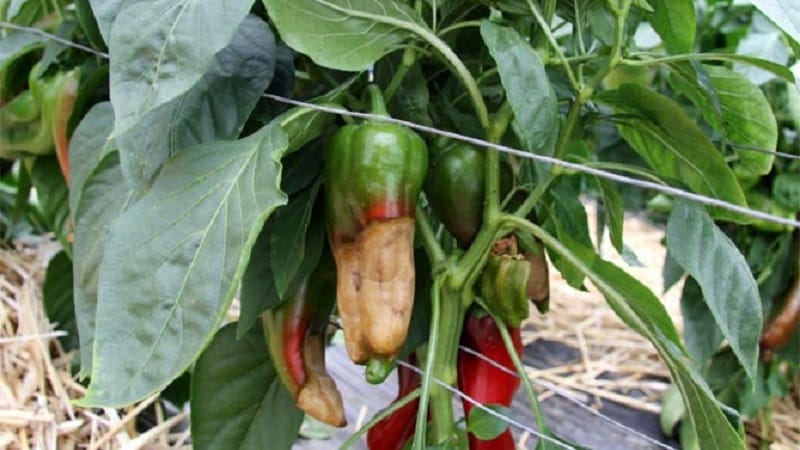
How to deal with crown rot? Start by restoring the conditions necessary for vegetables to grow. Check the soil composition, structure, moisture. Remove the affected fruits from the bushes and burn them away from the beds.
Feed diseased bushes with a solution of potassium carbonate and calcium nitrate. After they have recovered, carry out a preventative procedure before harvesting the entire crop.
In serious cases, use copper-containing medications:
- Bordeaux mixture;
- copper oxychloride;
- "Home";
- "Cuprozan".
A universal remedy for the treatment of severe forms of rot is “Fitosporin”.
Blackleg
Once symptoms of this disease appear, pepper is unlikely to be cured.. Therefore it is easier to prevent.

For prevention, seeds are soaked in a solution of potassium permanganate and the seedlings are watered with it.. The antifungal drug Fitosporin may help. If the stems turn black, the pepper bushes are immediately removed from the area and burned.
Prevention and treatment of blackleg:
- inspect the seedlings daily for the presence or absence of signs of disease;
- do not allow plantings to become dense;
- treat the soil before planting peppers with antifungal agents or disinfect at high temperatures (calcine in the oven, pour over boiling water);
- monitor soil moisture and air in the greenhouse;
- Periodically ventilate the greenhouse and greenhouse, but avoid drafts.
Sclerotinia
Disease usually develops at low air temperatures - below +15°C. To prevent its occurrence, do the following:
- organize additional heating of the greenhouse;
- water the pepper only with warm water;
- provide good ventilation;
- promptly destroy affected plants.
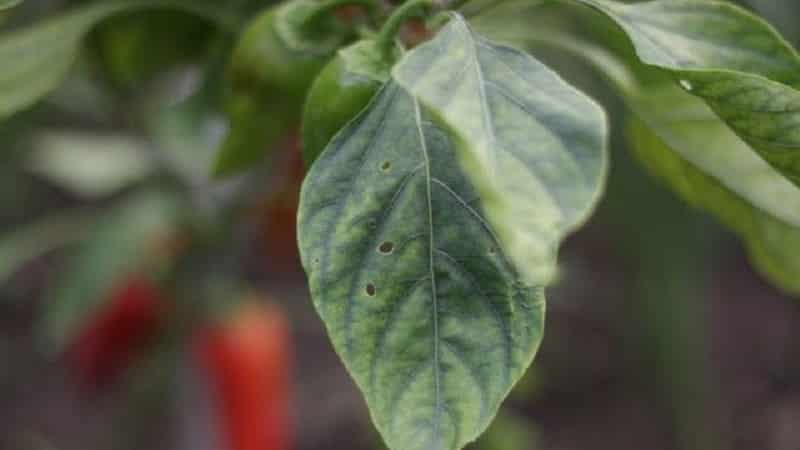
It makes sense to treat peppers for sclerotinia if the disease is not very advanced. In this case, an effective fungicidal agent is used - the drug "Trichodermin". It is diluted in a proportion of 20 g of product per 5 liters of water and sprayed on the plantings.
Spotted wilt
Spotted wilt carried by insects (aphids, thrips, cicadas). The main way to combat them is to pre-spray the plantings and alternate peppers with strong-smelling herbs: basil, parsley, sage, thyme, calendula.
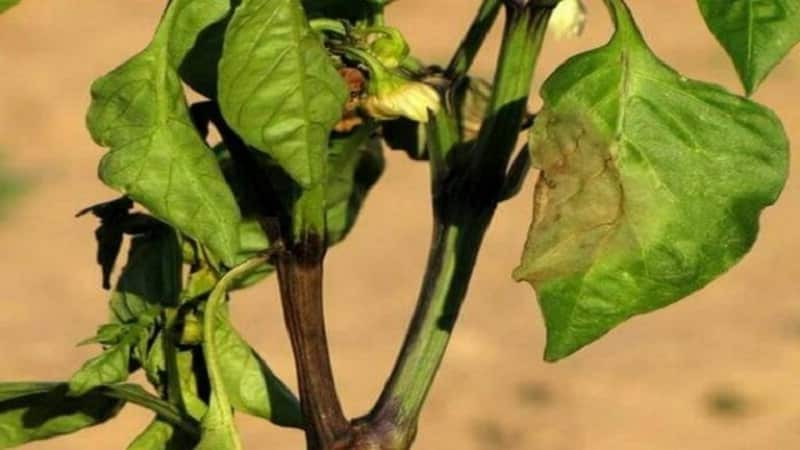
If infection vectors have already appeared on plants, then they are harvested by hand, and the vegetables are treated with insecticides and sprayed with Fundazol.
Gray rot
Gray rot on peppers develops when conditions of high humidity and heat are created. Decay is promoted by the proliferation of gray mold fungi. If the greenhouse air is very humid, the disease will spread to a large number of plants within a few days.

Treatment begins as soon as the first signs of gray mold are noticed. First, the affected parts of the plants are removed and then treated with a fungicide.
Traditional methods of treatment
Almost everything drugs that fight rot and the causes of its occurrence can damage the crop, saturating it with harmful substances. Therefore, summer residents use traditional methods of combating rot. They are not always effective, but they will not harm human health.
To combat blossom end rot seedlings are sprayed once a week with a solution of milk and water diluted in a ratio of 1:10. Repeat 2-3 times.
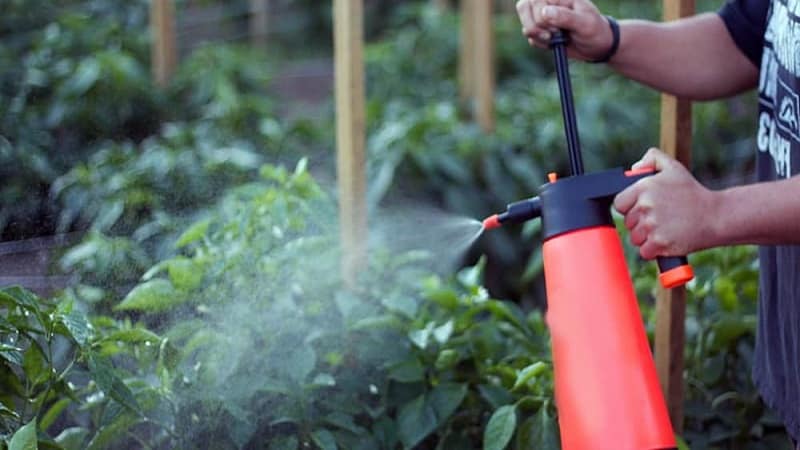
Also bushes watered with crushed chalk diluted in water. Before planting, crushed eggshells are added to the soil.
For other types of mold You can try treating with a solution of whey and iodine. Ash, lime, onion peels, and crushed tobacco help against insects that carry bacteria.
Read also:
How and with what to combat diseases of pepper seedlings
Prevention
Curing rot on peppers is not easy. Plants often have to be removed and burned. But this does not provide a complete guarantee that neighboring bushes will not become infected.
Follow the recommendations to prevent the development of diseases on your site:
 Be sure to treat the greenhouse in the fall and early spring to remove bacteria. Freeze the soil for seedlings in the freezer or heat it on the stove.
Be sure to treat the greenhouse in the fall and early spring to remove bacteria. Freeze the soil for seedlings in the freezer or heat it on the stove.- The key to viable seedlings is healthy seeds. They are treated with Bordeaux mixture, a solution of potassium permanganate, kept in growth stimulants, hardened on a battery, and immersed in hot water.
- When planning your beds, remember the rules of crop rotation. Peppers should not be planted next to tomatoes, eggplants and potatoes. Also, these vegetables should not be its predecessors.
- Frequent planting of seedlings is not allowed. If sowed frequently, it must be plucked and replanted. Crowded plantings are the main problem in greenhouses and an excellent condition for the development of bacteria.
- Observe the temperature and watering regime, carry out loosening and ventilation in a timely manner.
- The quality of the soil is of great importance. If you do not have experience in preparing fertilizing yourself, then it is better to use a complex fertilizer.
Conclusion
Of course, it is easier to prevent the appearance of rot by providing the peppers with proper care than to subsequently try to cure and save the crop.
If the disease does overtake your beds, do not panic and try to correctly determine the cause of its appearance. After this, depending on the disease, begin treatment immediately. Do not eat rotten fruits under any circumstances.